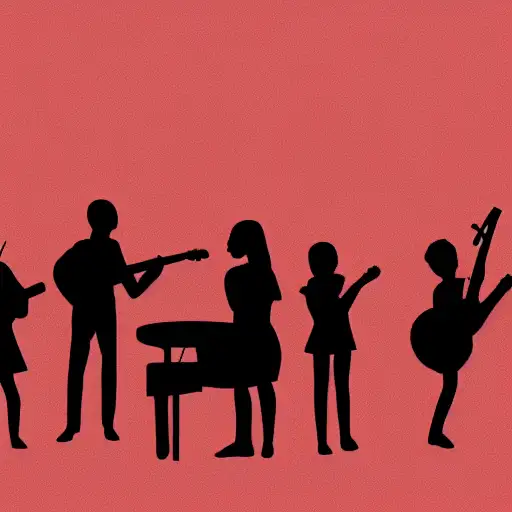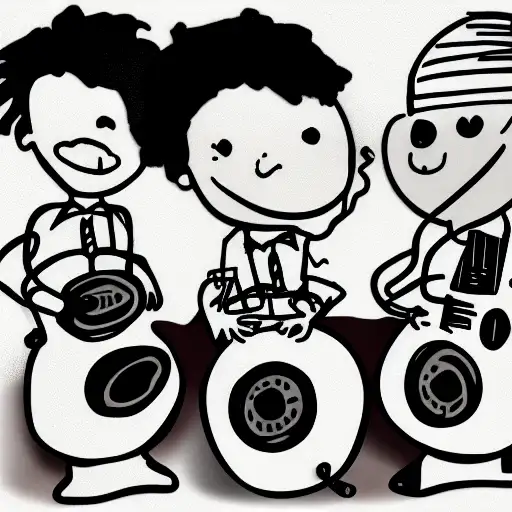How Music in Schools Helps the Youth Become Smarter
We show you how teachers are now using music to help the youth learn in different ways.
Music is basically wherever you go. You can experience music on the street, in your own home, while taking a cab, on your phone, and at concerts. And yup, you can also integrate music inside the classroom, too!
It is actually a great tool to use music in any class as it is a great way to teach lessons. No special training or costly resources are needed for one to be able to utilize it, too.
The benefits of incorporating music into the lessons are also highly useful to every student as it impacts their overall performance in the classroom. It also serves as an outlet for creativity that is very important in their development as a child.
Indeed, music serves many purposes in the classroom and we will discuss everything in detail below.
But before that…
How Is Music Used in Schools?
There are infinite ways music can be used in the classroom. Below are some of the most common uses:
- In listening storybooks (any in any listening lessons)
- To help the students memorize essential information
- To set transitions in the classroom or a daily routine
- To get the students interested in a new lesson/content
- By creating a playlist for the different occasions that happen in class
- To get the students to feel certain things such as being relaxed, being competitive, being calm, and more.
Music in Other Subjects
When we say music in schools helps students become smarter, we don’t just mean just having a music class. We mean all the other subjects taught in school. If you’re curious about how is that possible, then here are some examples.
History: Music can be taught by introducing historical events and what the culture is like before. Students may listen to or watch clips while they analyze what it was like to live in the past.
Mathematics: Musical patterns can be used to have the students familiarize themselves with the numbers (or formulas). Music can also be taught with eye-catching visuals to keep the learner interested in the topic.
Science: Songs about animals, food, weather, or even body parts helps the students learn the lesson quickly. Listening to music can also be used when teaching sound waves and vibrations.
English/Literacy: There are many English songs you can find on the internet that can easily help students learn the alphabet, phonics, rhyming words, and even complex sentence patterns. In literacy, music can be used as a metaphor to describe the elements of a story.

Giving children another voice in the classroom such as using music can reach the youth who are disconnected.
How Music is Helpful to Students
The youth today is very lucky to have music that is easily accessible anywhere. But what are really the advantages of music to the students?
- It stimulates the student’s brain which makes the students exposed to a huge vocabulary in a short period.
- It also provides the student's exposure to other languages and it gives them the foundation to communicate in one.
- If used appropriately, music helps the students memorize things that are fundamental to their studies.
- Students also develop their listening skills through the use of music in class.
- Proper music usage can also promote coordination in students. (Example: hand-eye coordination)
- It can bring out the creative juices of the students.
- It can be a source of stress relief for students.
- It can help the students be more energized in classroom activities as it increases motivation.
- It can also enhance the imagination of the students.
- Music allows students to feel happier, too.
Quick Trivia: Did you know that there was a study where a teacher played music every time his students entered the classroom? Guess what, at the end of the term, 74% of the students said that the music had a great effect on how they see their teacher.
Overall, the benefits listed above are just a few of the many things music can do to enhance students' learning.
Success Stories of Using Music Through Learning
Corlears School in New York uses music in every age group they are teaching to improve social skills through singing, playing games, and participating in movement activities. They also help their students learn how to play the instruments.
They are aiming for their students to acquire a lifelong ability for the enjoyment of music and to have the knowledge to grow their interests independently.
Tiller School in North Carolina also strives to integrate music and arts into their classrooms as much as possible. Through this, they believe that their students are growing academically and creatively while expanding on their problem-solving skills.
Pasadena Waldorf High School in California on the other hand uses music as a living language for their students through which they could express themselves and connect with their peers. They also support students who are willing to learn more about music no matter what their experiences and skills are.
There are also a lot of universities and colleges that specialize in music and are very successful up to this day such as Julliard School in New York, Curtis Institute in Pennsylvania, and Berklee College of Music in Massachusetts.
Final Thoughts
From then until now, music is always used as a tool for the youth to learn better. And with the overflowing advantages of music inside the classroom and the growing numbers of schools using it, the future of our children will definitely be in excellent hands.
The secret to maximizing learning is happiness. And if music makes us all happy, imagine what benefits it would equip to the next generation: unlimited.
References:
EduTopia | SafeSupportLearning | GP | Science&Literacy | WGU | ProSolutions | TheInspiredClassroom
Blog Article Tags
music school learning lesson teachers education songs youth childrenMore Articles
Where To Find Good Indie Music - If you're a long time fan or first time listener of Indie music, we'll show you the best methods for discovering the music you love.
What It Takes To Become a Great Drummer - I help you learn what it takes to become a great drummer no matter your experience level.
How To Make a Living With Your Music on YouTube - Learn how to monetize and maximize your YouTube presence with today's article.
7 Must-Attend Music Conferences - Check this out if you're looking for the important music gatherings of the year.
How to Overcome Stage Fright as a Musician - We show you 7 simple steps for overcoming & fighting your stage fright.


